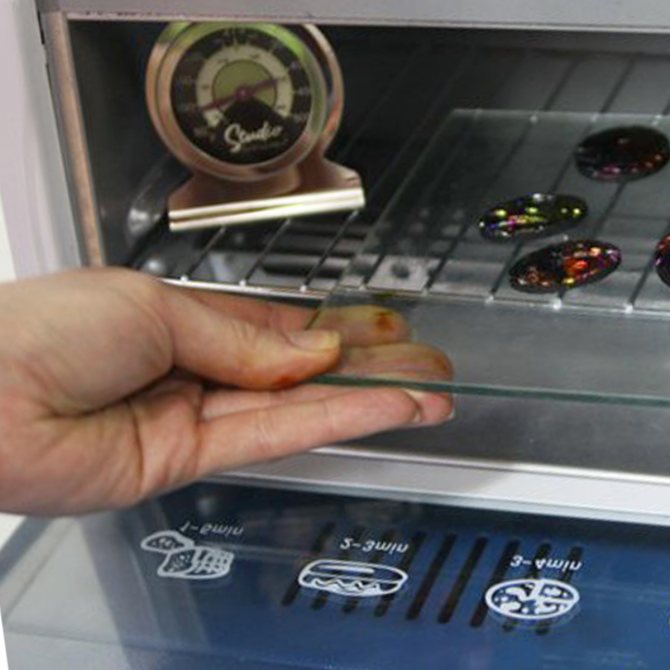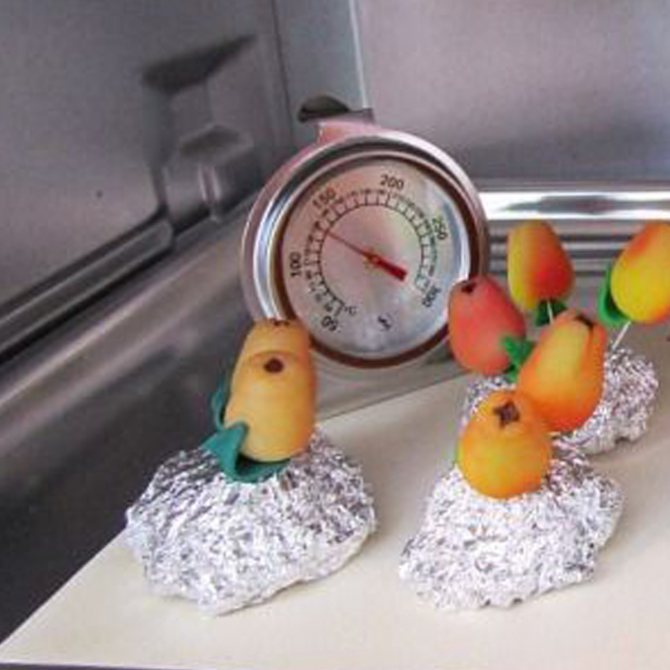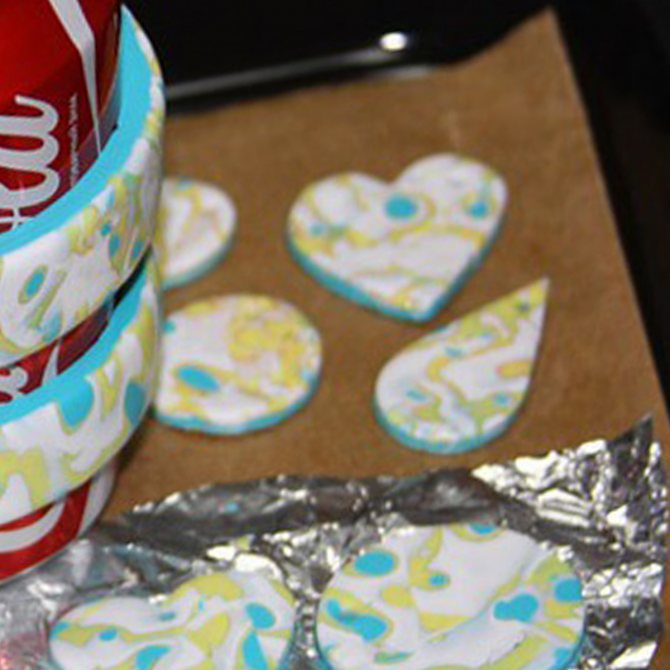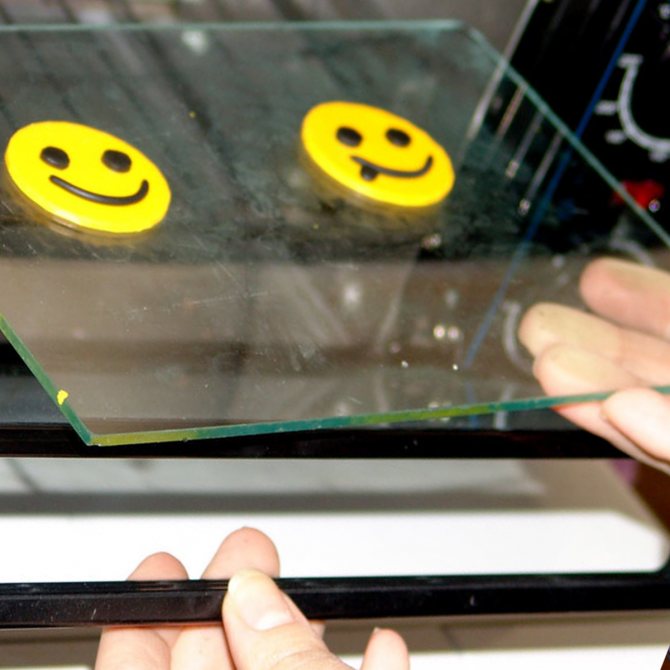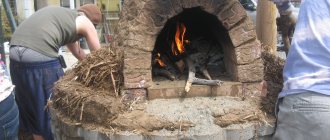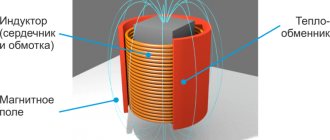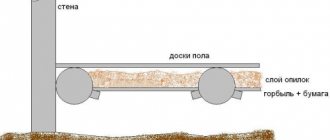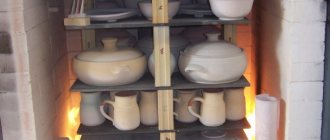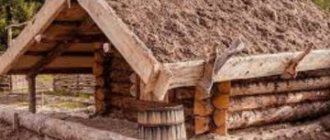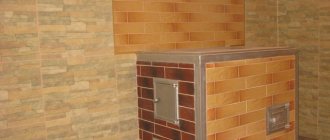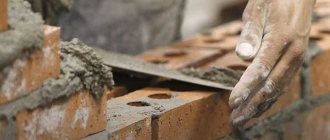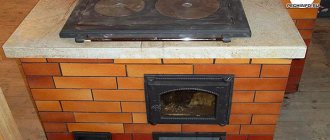Clay history
The first ceramic round-bottomed vessel, which was made of baked clay, was made by man about 10 thousand years ago - the Mesolithic era reigned on Earth. Nevertheless, a more general idea about the theory of a person's acquaintance with this material, which tells that a piece of clay was accidentally dropped by a person into the fire, and when it was taken out of there, it turned into a solid mass, does not fully correspond to reality. Scientists of our world have slightly corrected this legend with their research. At one time, a special analysis was made of the remains of clay shards from the excavation, which belonged to the Neolithic era, a group of specialists established the following fact - our distant ancestors actively used bird droppings, bird fluff, egg shells and pieces of mollusk shells as a raw material for the production of dishes ... These components were always abundant where migratory birds usually nested and mollusks gathered along the coast. Such a set of materials had a high degree of stickiness, and the clay acted as a connecting link - it occupied no more than 30% in percentage.
Several millennia have passed, after which a person realized that with the help of clay it is possible to bond non-plastic materials, such as grit - crushed stone, and chamotte - crushed fragments of burnt dishes, as well as sand. These materials are of mineral origin. At that moment, it dawned on a person that clay is the most durable material that can be used to make dishes. From that moment on, they began to use one grade of clay for the production of products, or the grade of clay was mixed with each other. This is how burnt earthenware was created.
This experience, which a person received in dealing with clay, served as a good impetus for the development of pottery. People already had an idea of what clay is and what effect a variety of organic and inorganic additives have on it.
After a while, people mastered the method of cleaning pottery clay from various impurities - elutriation. In ancient Greece, this material was mined near the city of Athens - they were open-pit mines. The extracted clay went through a process of processing - drying, grinding with the help of special two drums, rotating by the power of slaves and horses. After that, the resulting mass was poured with water and soaked for some time in certain boxes, made up of a stepped staircase. When the time came, these boxes with a mass of clay were washed under the pressure of clean water, which boiled and flowed gradually from one box to another, according to the principle of steps. Clay for pottery was divided into different types of fractions, each of which was used for something. The purest clay was found in the lowest box. The water went down, and the sediment had to mature and thicken. And today, elutriation is the most convenient and profitable way of cleaning pottery clay.
"Keramos", translated from ancient Greek means "clay", data on this concept are available in the testimonies of Homer, in his work "Iliad", which dates back to the VIII century BC. Some scholars argue that the root of this word is the Indo-European language, which was used by the inhabitants of Europe - from the borders of the Urals to the territory of the Apennine Peninsula back in the III millennium BC. Perhaps these judgments are erroneous, because if we compare the roots of some words "zd", "keramos" and "brnie", we will see that the concept "zdun" in translation from Old Slavic means "potter", the root "zd" is present in such words like "building", "creator", "create". The term "brnie" is "clay mixed with water." It is possible that even the name of the city of Brno in the Czech Republic was given based on these considerations.In fact, the word "clay" has a much longer and more ancient history, for example, it could have arisen from the word "clay", which means "aluminum oxide or alumina", which is a constituent part of clay.
Mix making
The first type of mixture is quite simple to prepare. The clay can be immediately poured with water and brought to the desired consistency and start molding.
The second type of mixture is more difficult to prepare. First, the clay is dried in the sun or in a warm room, the clay should be as dry as possible. After that, it is placed in some kind of dish and pounded to crush large pieces, after which it is sieved - this allows you to get rid of large particles. Anything that has not been sifted can either be thrown away, or you can try to grind it again, and then sift it again. After that, the sifted mass is diluted with water to the desired consistency.
The third type of mixture is prepared from the second. The sifted mass is diluted with water to a very liquid state and, stirring constantly, it is poured through cheesecloth folded in several layers, or a rare cloth. In this case, grains of sand and other relatively large particles remain at the bottom of the first vessel, slightly smaller ones are retained by the tissue, and the smallest ones, together with water, enter the second vessel. The gauze or cloth filter must be rinsed periodically as it becomes clogged. The rest of the mass can be poured with water several more times and filtered, but there will be almost no small particles in it, and therefore there is no special sense in this.
After the mixture is filtered, it is left to settle for a day, during which time the clay settles to the bottom of the vessel and becomes compacted. After this has happened, you can drain the excess water. Then the clay is dried to the desired state.
What is Clay?
Clay is a dispersed sedimentary rock, which consists of some plastic mineral particles, the chemical composition of which is hydroaluminosilicates, as well as accompanying impurities of other minerals. The concept of "hydro" is quite well-known, "alumo" is understandable, but silicate is a compound of oxygen and silicon.
The property of plastic minerals combined with water is to make the clay more plastic, so that it is possible to form a certain shape from it and maintain it when it dries. Quartz (sand), carbonates (marble and chalk, dolomite and limestone, magnesite), as well as feldspar (for example, granite) are non-plastic, moreover, their inclusion in the clay is capable of "thinning" the material, respectively, can reduce plasticity.
The concept of plasticity from the antique means "fit for sculpting", which directly indicates the ability of the material to change its shape if you apply force, as well as the ability to maintain the acquired shape. Pottery clay and its plasticity can be characterized by several criteria. For example, how plastic clay is can be judged by the efforts that must be made to make a clay product deform. You can also determine the plasticity by the amount of water used, which is mixed with dry clay, and after the addition of which the clay is capable of deforming and retaining a certain shape.
A professional potter will be able to determine the level of plasticity of clay for a potter's wheel by such a sign - the clay will wrinkle with some effort in his hands, but will not stick to them. This is the easiest and most affordable way to determine the plasticity of clay.
Pottery clay can be white, gray, black, blue, green, brown, red and yellow. Often, the color of clay directly depends on the influence of organic substances, some tend to burn out during firing. For example, Filimonov's black clay can be made white by burning it.
Types and characteristics
The composition of clay includes kaolinite, illite and other aluminosilicates, it also contains sandy impurities and carbonates.
Pure rock, as a rule, gray in color, red, yellow, and blue types of clays are also common. By origin, this mineral is divided into subgroups.
Clays of this origin include the best refractory clay rocks that occur on the bottom of lakes. The advantage of this rock is that it contains all the clay minerals.
Clay material is widespread in nature. Clays are divided into subgroups depending on the mineral composition and particle diameter, the presence of certain impurities.
Red
Under natural conditions, this type of clay material is given a red tint by oxygen-containing compounds - ferrum oxides; they are present in this type of clay in an amount of 4 to 10%.
Main characteristics:
- Red clay belongs to sedimentary rocks. It appears in natural conditions when applied by water flows of eroded formations.
- This type of clay material is very plastic, kneads well, its elasticity determines the use of red clay as a material for sculptural modeling, ceramics and other pottery.
- Finished products made of red clay have great strength and durability.
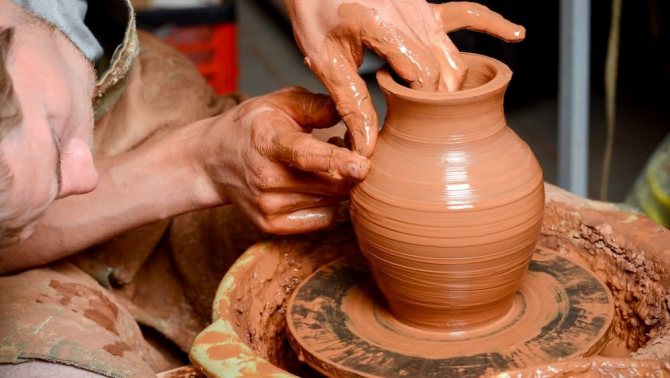
Red pottery clay
White
Pottery white clay is found quite often, its deposits are not rare. Most often it accumulates in lagoons.
Main characteristics:
- White clay is a rather heterogeneous mass, it contains numerous inclusions, impurities, and organic residues.
- When interacting with water, this type of clay acquires a light gray color, and after firing this clay turns into a beautiful white product. White clay is very elastic.
- There are practically no iron oxides in this raw material, so white clay is slightly translucent. It is used to sculpt household items, jugs, decorative clay figurines.
- Products made from white clay raw materials are often glazed and kept in ovens at high temperatures.
Ceramic masses
This material contains calcium impurities, which leads to its high porosity.
Main characteristics:
- Ceramic masses are composed of kaolinite, illite, aluminosilicates, admixtures of sand, calcium and sodium carbonate.
- Porous ceramic masses belong to sedimentary rocks. In natural conditions, they are formed as a result of sediments by water flows of particles of destroyed fossil rocks.
- The color of the ceramic mass is usually gray or white. Sometimes a greenish ceramic mass can be found. This clay material is well fired at low temperatures.
Where does clay come from?
The emergence of clay on planet Earth is attributed to the interglacial period, during which there was a gradual melting of the ice cover, the thickness of which in some European parts reached two kilometers. The melting process caused the most powerful water streams, which played the role of clay. There was peremucheniya, re-delaying of rocks, which in the process of movement were mixed into a single mass. On the territory of Eurasia, as well as in some regions of Russia, as a result of these processes, many deposits of clay appeared, which had different properties. You will not find this on another continent.
If we turn to the physics and chemistry of the appearance of clay, we see that clay, as such, is a product of complex processes of decomposition of certain rocks. But these processes took place on Earth not only thanks to glaciers. The inaccessible peaks of the mountains contain rocks such as granite and porphyry, in the lower parts of the mountains there is shale - these rocks have been exposed to wind and abrupt changes in atmospheric influences.Winds in winter and fierce frost, thick fog and terrible continuous rain, replaced by the scorching sun - these natural elements gradually destroyed the structure of entire stone rocks. Rain streams wash away fine dust that was formed by the decomposition process, and a powerful stream of rainwater, which formed from rains and a melting glacier, delivered this dirty stream to large rivers. When this mass reached a calm place in the river, it gradually settled and thus clay was formed. These processes occur, in fact, in every, even the smallest river. You can see this for yourself when you try the river bottom.
Sources of raw materials
If you do not have the opportunity to buy pottery clay at a specialized enterprise, or in a quarry where a deposit of this material has been discovered, then you can find it everywhere - clay can be found anywhere, only it will be much more difficult to work with such material. Roadsides, shores of marshlands or the shore of a small reservoir, clay formed as a result of rain or spring water getting into a natural clay bowl and not being able to go into the soil - these are the sources of raw materials.
The territory where it was possible to extract clay for the potter's wheel was formerly called by the people simply - clay, clay, clay dig. Clay meant a hole 71.12 cm deep, which was located somewhere in a forest area. Clay, often, potters removed either a whole layer, or removed it in large pieces of 16 kg in weight. Everything that was dug up was put on a cart and taken to the workshop. But extracting clay is not an easy, even dangerous process - there are frequent cases in history when, when excavating clay layers, the earth collapsed and the potter died. Clay was mined as needed. Necessarily, before the onset of the rainy autumn season, a supply of clay was made. Usually, pottery workshops stocked up annually with clay in an amount of up to 200 poods. For clay in the yard of each master was assigned a certain place - a shallow hole in the courtyard, or lumps of clay were laid in the entryway of the house. It also happened that clay lay in the potter's yard for several years in a row. Thus, pottery clay underwent one more processing - a frost test. Since there were long rains before winter, the layers of clay were saturated with water, then frosts came and loosened it, which contributed to the improvement of plasticity. It turns out that the more clay lies, the better its qualities become. When the clay is saturated with moisture, it slowly begins to rot. Salts, which are present in a certain amount, enter into a chemical reaction, as a result of which a gaseous environment is formed. If it is not given a way out, this quality can harm the finished clay product when fired in a kiln. According to the folk place where lay pottery, was called "purgatory". However, the air around this place was always filled with hydrogen sulphide, which is released from the clay when rotting, and this smell was difficult to stand.
Types and properties of pottery clay
Long before the period when clay began to be used in wide industry, as well as before its properties began to be studied, the properties of pottery clay could only be determined by touch. And today, many masters use just this way to determine its properties. Indeed, only in this way it is possible to more accurately assess the properties of clay, which comes to life in the hands of a potter.
So, the clay that is used in the pottery workshop must have increased fat content, special weight, pliability, elasticity, and must also have a solid character, because it has to withstand the shape set by the master.
Pottery clay can be red or brown, blue or green, gray or white.Sometimes you can find clay the color of chocolate, after the folk "snickers", or dirty black clay. These colors are due to the presence of a large amount of organic impurities. Generally, the level of organic matter in clay, including fine carbonaceous particles, can be very high. Thus, this is sufficient to support the industrial roasting and combustion process without the addition of any fuel. For example, in this group of clays we can include the Moscow Region intercoal refractory clay.
The firing process for pottery clay is the same oxidation process, after which it can turn either white, red or yellow. What color you get clay after firing depends only on the presence of a certain amount of titanium and iron oxides. If iron oxides in combination with titanium additives in total do not exceed the level of 1%, the clay will have a white color even if fired. But if the total indicator of these components is more than 1%, after the end of the firing, the clay product will turn reddish, even if it had a green or blue color in a semi-finished form. The white color is given to the clay product by aluminum oxide - it is present in the clay in a percentage ratio of up to 60%. Refractory clay is yellow in color. It is not used very often in pottery, since it requires a very high temperature to burn it. You can use this knowledge when preparing colored clay samples - add inorganic pigment to white clay and you get a different color. It is impractical to add the same pigments that have organic substances to pottery clay - they will simply burn out during the firing process, the clay will be the same color as before firing.
Blue or green clay is suitable for the production of pottery without prior preparation. It could be found along the riverbeds.
Craftsmen usually advise against messing with potter's wheel clay that is chocolate or dirty black in color. The reason is simple - when you burn the product, the organic matter that is part of the clay will exude an unbearable smell.
Master's advice
In pottery, fresh and sour clay was also used. Fresh clay was preliminarily poured with water and crushed, and sour clay was laid in the mixture from autumn to spring, only after that was used. In use there was also felted clay, cloth, white and skinny, as well as brilliant green.
Making ceramics with your own hands - a hobby for sophisticated natures
Ceramic vases, pots, tea sets, candlesticks, plates, whistles and even musical instruments can all be created by yourself.
To learn how to make ceramics with your own hands, the main thing is desire. Before you become a ceramist, try to mold the simplest trinket out of clay, and you will understand whether it is worth spending money on buying equipment for the job. If something doesn't work out, it doesn't matter, soak the marriage and make a new figure out of it, before baking, the product can be modified endlessly.
- What ceramics are made of and where to get materials for work
- Methods for making ceramic products
- Pottery kiln - types and preferences
- How to choose a potter's wheel
- The benefits and enjoyment of the ceramic hobby
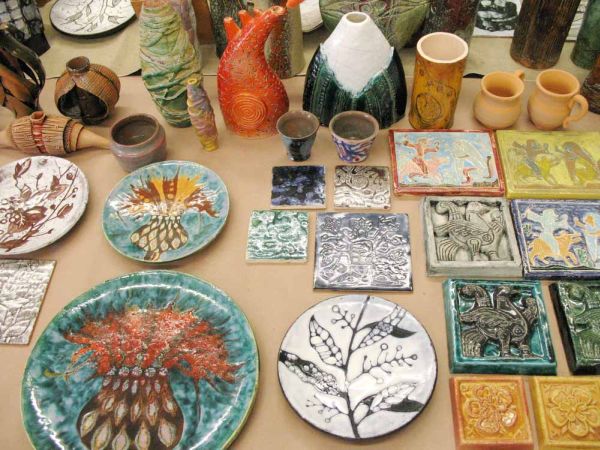

What ceramics are made of and where to get materials for work
Ceramics is fired clay, which is the main material in the work of a ceramist. Unlike polymer clay, natural clay is of natural origin, it is mined from the bowels of the earth, without being subjected to chemical and other types of processing.
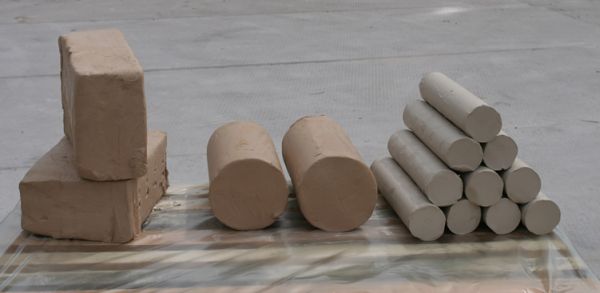

In order to save money, experienced craftsmen extract and prepare raw materials on their own. This process includes several stages and hardly deserves attention if you are just starting your journey and live in a city.
Clay for making ceramics must be greasy and free of inclusions of stones and other debris, otherwise the craft will crack during the baking process. The finished mass is stored under certain moisture conditions.
Natural clay happens different types:
- White is the most common, initially has a grayish tint, and after heat treatment it acquires a pleasant ivory hue.
- Red - contains iron oxide, which gives the raw material a greenish tone. The main color of the raw material is brown; after firing, the products turn red. It lends itself well to sculpting, does not crumble, ideal for sculptures and large items.
- Porcelain - gray raw and white after baking.
- Blue - is more often used in cosmetology and traditional medicine.
- Black or dark brown ceramic mass is the hardest clay, acquiring an ivory hue after being processed in an oven.
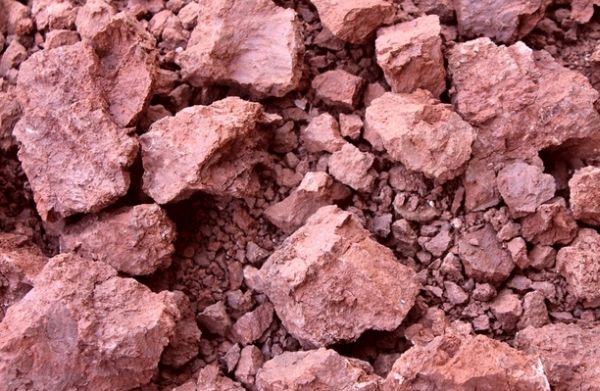

Red clay
Also clays for ceramics classified by temperature processing for low-melting, medium-melting, refractory.
It is most convenient to buy ready-made pottery clay, focusing on the size of the fraction, color after firing at different temperatures and other characteristics and quality indicators. The cost depends on the manufacturer, packaging, texture. There are ready-made masses with additives to facilitate various tasks - sculpting, molding, potter's wheel.
In addition to clay, you need glazes and enamels to cover products, pigments to give your hand-made ceramics the desired shade, special additives to improve properties and heat treatment.
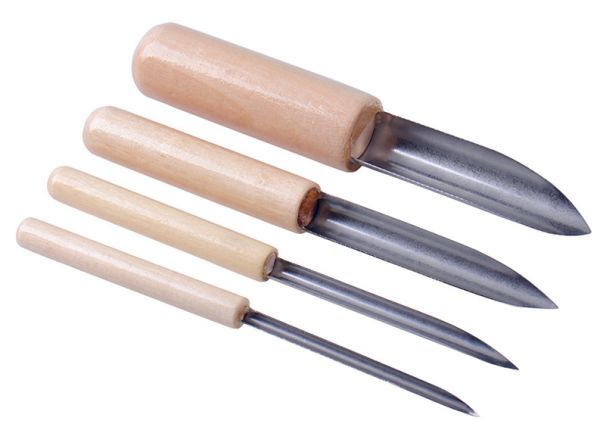

For gluing parts, use slip mass - a kind of glue made from diluted clay. If you simply connect the elements, they can fall off when heated. All this is sold in specialized stores for ceramists.
Methods for making ceramic products
There are several ways to turn a clay mass into a beautiful pottery.
Molding - the most affordable way of making ceramics with your own hands at home. Souvenirs, sculptures, dishes, toys or other crafts are molded by hand, as if from plasticine, helping themselves with special stacks or improvised devices.
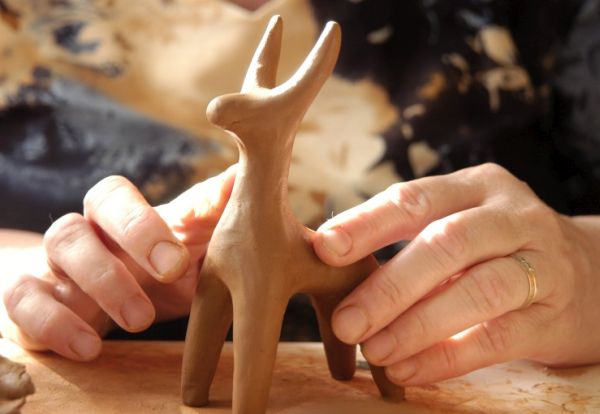

Pottery requires a rotating circle. With the help of this ancient craft, vases, jugs, pots, plates, cups are still being created today.
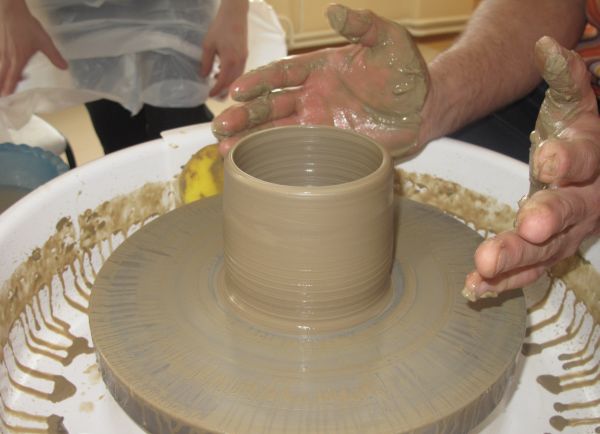

Workout - the easiest way to make ceramics for beginners. In the work, a plaster mold is used, in which soft clay is laid out, and after hardening, a figured product is removed. Plaster molds are attractive because they absorb excess moisture, helping the clay product to harden and dry.
Casting - here they also use forms, but of a different plan. The diluted clay is poured into molds, the blanks are dried, removed and painted.
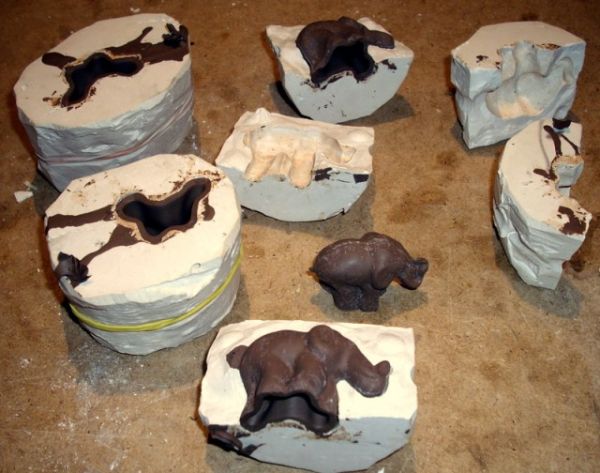

Clay crafts gains strength only after firing - processing in pottery kilns at temperatures from 900 to 1300 degrees. Ready-made souvenirs are coated with acrylic paints or special glassy glaze for ceramics. In the case of glazes, an additional firing is required after staining.
If you want to get a natural shade, use milk firing - cover the unpainted baked ceramic figurine with milk in several layers and bake again at lower temperatures.
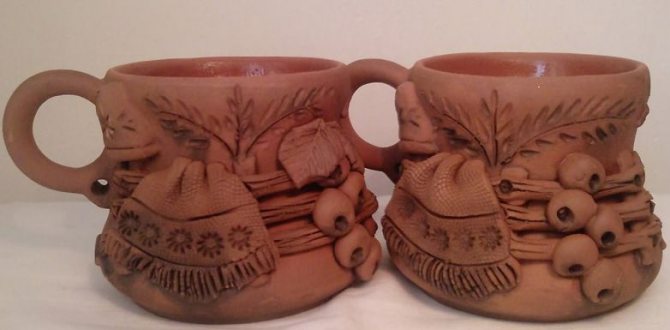

Pottery kiln - types and preferences
Previously, ceramics kilns were forges dug in the ground and were heated exclusively with wood. Modern pottery stoves are gas, electric and wood-burning. The latter, as a rule, are made with their own hands, they are suitable for use in private households. In the conditions of an apartment, it is most convenient to work with electric furnaces; for large volumes, you can choose a gas one.
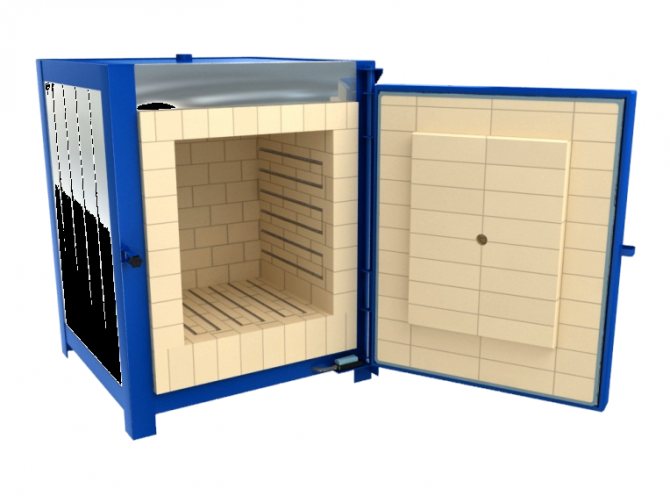

Refractory bricks or other material that retains heat and is not afraid of heating is hidden in the metal body of such furnaces. To remove moisture, ventilation holes are provided, the process of ceramics firing is controlled by a software controller. Electric pottery ovens are not cheap. The price depends on the manufacturer, volume, power.
On sale there are models with vertical and horizontal loading and bell-type ones. By the type of location of the heating element, pottery kilns are divided into muffle and chamber kilns. IN muffle it is located around a container made of refractory material (muffle). In the chamber, the heater is located inside, which reduces heat loss and makes the equipment more economical.
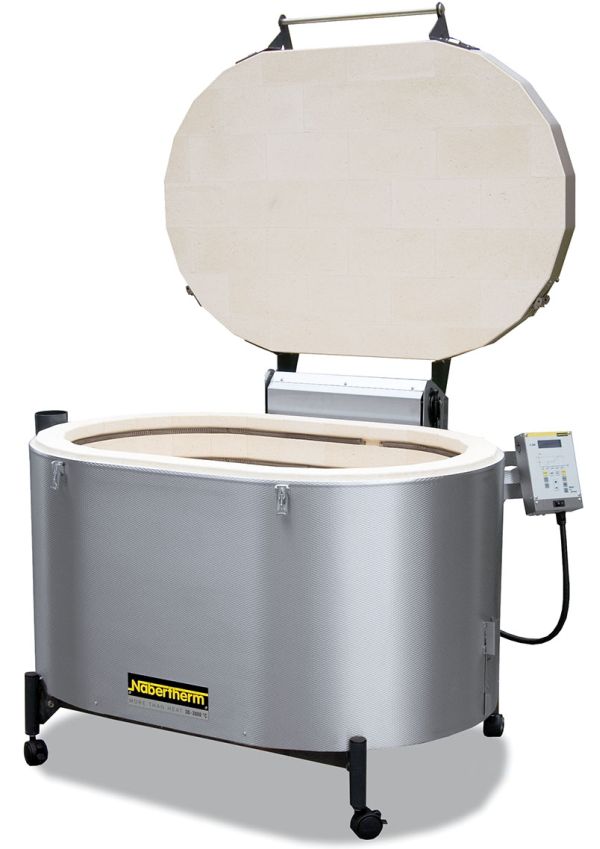

If you try a little, you can make a do-it-yourself oven for firing ceramics at home, taking as a basis refractory bricks and something for the body, for example, an old washing machine.
Baking is the most important and unforgiving process. Sometimes even experienced craftsmen see a bad marriage instead of the expected masterpiece. The items are never taken out immediately, they must cool in the oven.
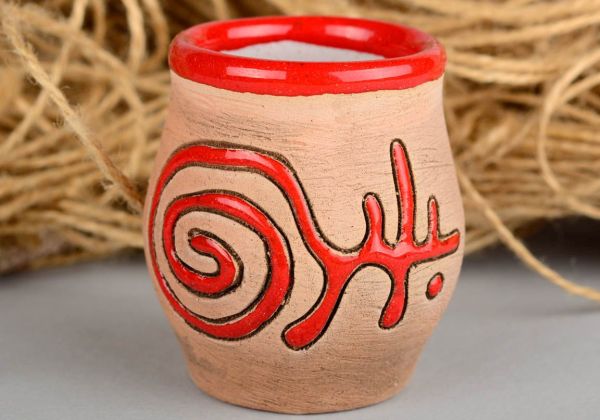

How to choose a potter's wheel
Pottery wheels are used to sculpt round objects, so this tool does not need to be purchased right away. If you are just learning ceramics, start by sculpting or kneading. Circles are available with manual, foot and electric control.
The latter are the most convenient and practical; they are most often bought by ceramists who make ceramics at home. It takes several hours to learn how to work on the electric circle. It will take several months to master a hand-operated tool.
When choosing a potter's wheel, it is important to pay attention to engine's type:
- The collector is the simplest and is often found in compact models, it smoothly regulates the rotation speed, but makes a lot of noise.
- Asynchronous - rotates in both directions, makes less noise, but requires skill to adjust the speed.
- Brushless DC motor is the best choice for serious jobs. Differs in reliability and low noise level.
Modifications differ in the diameter of the faceplate, its rotation frequency, engine power, and equipment dimensions. The price also depends on the manufacturer.
When choosing a potter's wheel for making homemade ceramics with your own hands, pay attention to the convenience of the hand position while working and sitting behind it. If you do not have a personal workshop, do not forget about compactness. It is advisable not to rely on advertising, but to ask for advice from those who have been dealing with ceramics for a long time.
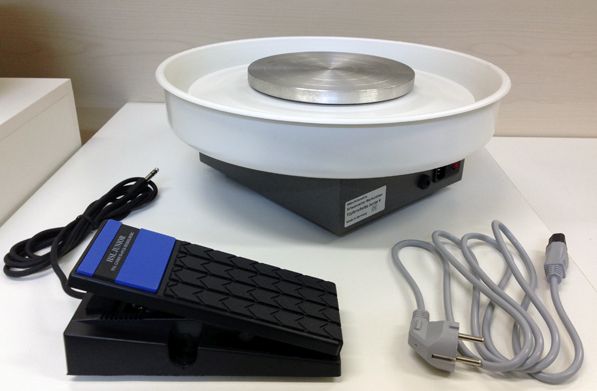

Quite good equipment can be found even among children's models; they will be able to make full-fledged, albeit small, products.
The benefits and enjoyment of the ceramic hobby
Initially, it was mainly men who were engaged in ceramics, but today, thanks to automatic circles and electronic ovens, it is a female hobby that requires patience, creativity, and artistic talent.
Pottery cannot be called very profitable, especially considering the purchase of expensive equipment. Rather, it is done for fun. Modeling is soothing, while the contemplation of working on a potter's wheel is magical.


Selling handmade ceramics, of course, is possible. Souvenirs, dishes, decor items are in demand. However, it is unlikely that it will be possible to get rich on this hobby - it takes a lot of time to manufacture, and the prices for handicraft products can only be estimated by those who understand the difference between stamping and the individual work of a master.
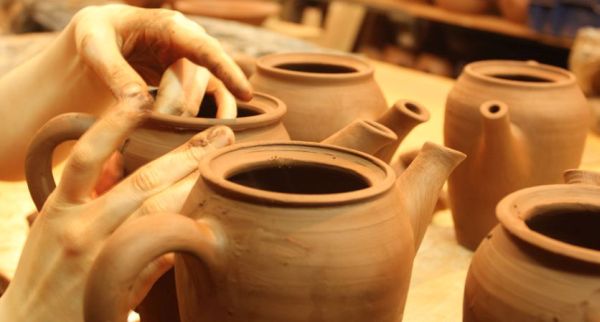

If you want to try sculpting but aren't ready to buy an oven, start with cold porcelain, polymer clay, or salt dough. Of course, these materials are not suitable for making dishes, but they make very beautiful souvenirs and jewelry, for example, a necklace or a necklace.
Well, if you decide to become a ceramist, then start with theory, watch video tutorials, learn from the experience of the masters. Good luck and creative success in this and other women's hobbies.

